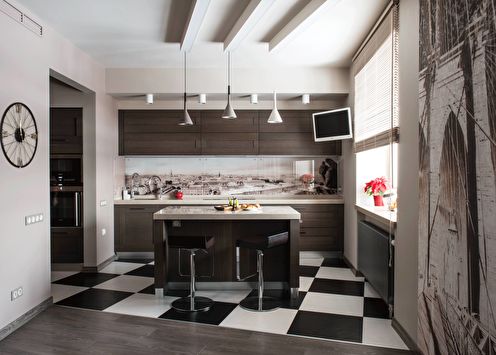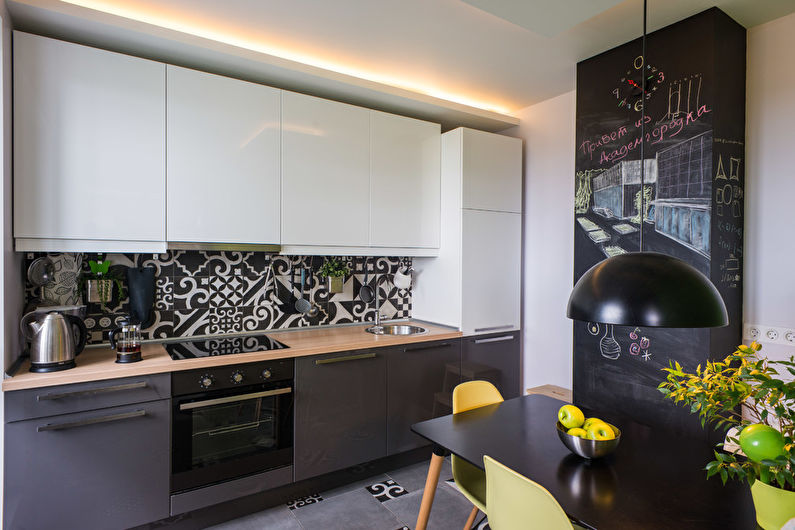
All planes in the kitchen are susceptible to the effects of heat and steam. But if in the dining area you can emphasize the decorative properties of the decoration, then next to the stove, the stability of the material plays a key role. Fortunately, there are more options for designing an apron for the kitchen than it seems at first glance. Some of them are as practical as possible, others have an unusual aesthetics, while others are the golden mean. Details are in our article!
Features and recommendations
This is not about the overalls of the housewives in the kitchen, although the purpose is almost identical. A kitchen apron is a coating over a work area that protects walls and furniture from steam, heat, a drop of grease and food. In order to adequately cope with this task, for its design you need to choose a material with good characteristics that does not deform with time, and also lends itself to care.
Although some designers prefer to use the finish over the entire wall area, more often the apron stands out from the overall composition and acts as a bright detail - with the help of color, texture or pattern. You can purchase the same coating as the countertop - this will help harmonize the space.
Dark surfaces are considered less practical. But if the apron is endowed with saturated color, then the rest of the room must be “muffled”. Horizontal stripes will help to visually lengthen the room, and mirror finish will add volume. Colorists are advised to use warm shades, as against their background the food looks more appetizing.
But these recommendations are very arbitrary, you need to push from your own capabilities and design tastes, the benefit of a wide range of materials.
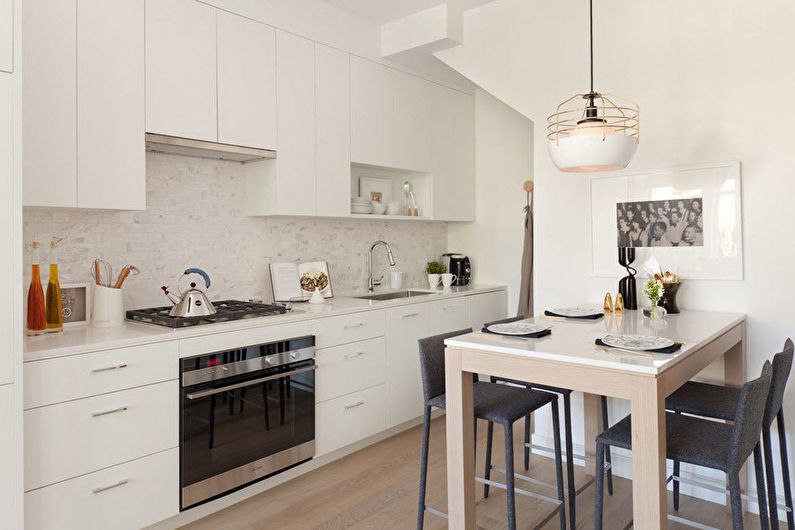

Types and finishes
1. Ceramic apron
The most popular solution, which is already ranked among the traditional ones. Tile is an inexpensive product that is resistant to moisture, fire, alkali and acids. It is easy to clean and, as a result, serves for a long time.
The disadvantage is the presence of seams that do not so well withstand pollution and absorb liquid. Because of this, the grout has to be updated quite often. Partially solve the problem will help the acquisition of a special waterproof option.
Today you can find products with a variety of shapes and patterns. For a modern style, a monophonic square or hexagonal coating is suitable, and the classic uses more decorated instances.
The tile is perfectly combined with other materials and is suitable for finishing the entire wall. Facing work is a easily soiled process that requires certain skills. In addition, it is rather difficult to update the design, since tiled products are not a one-year purchase.
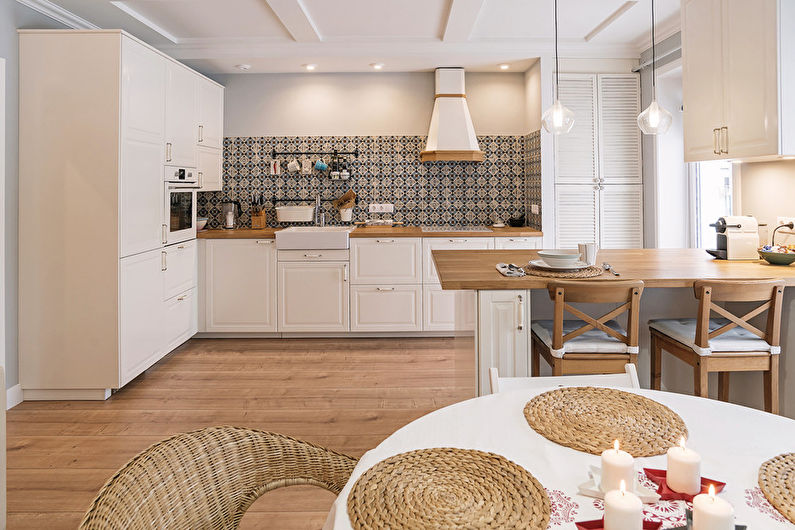
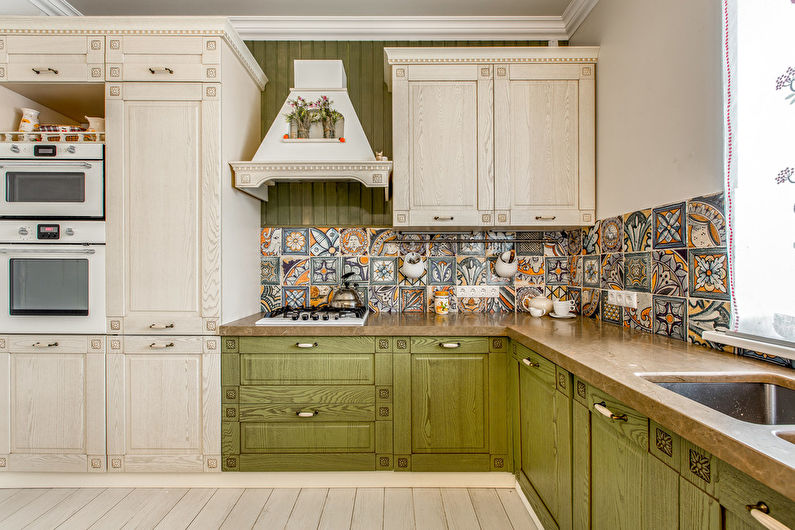
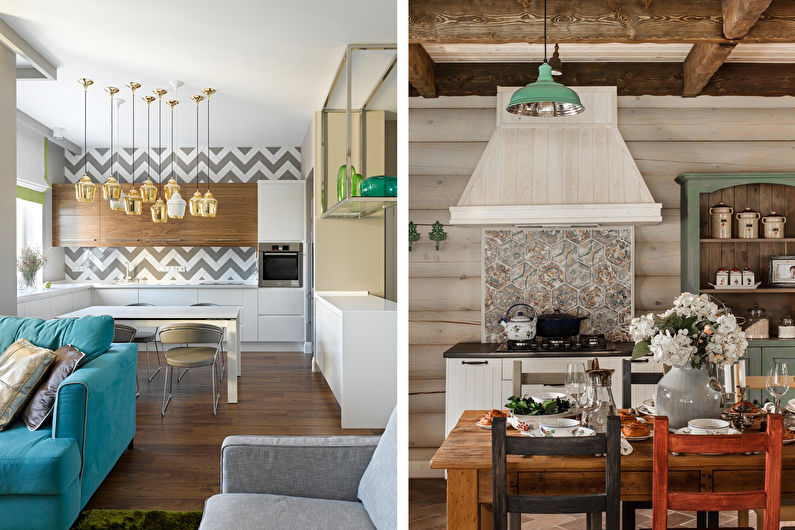
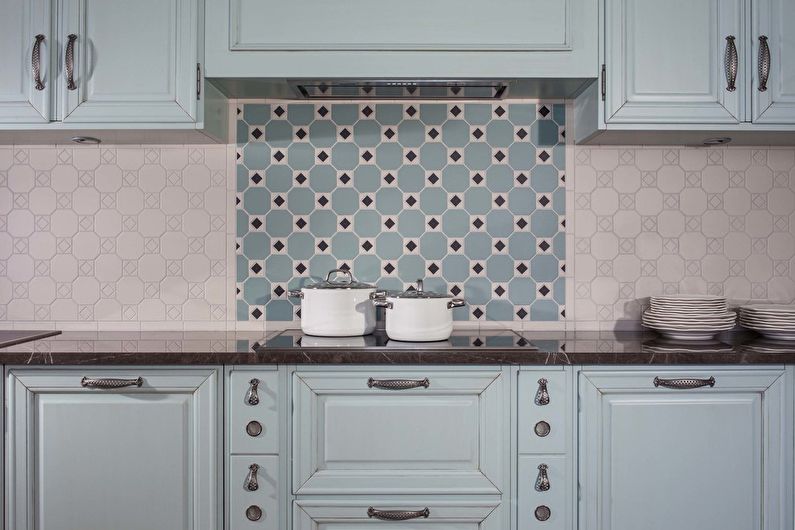
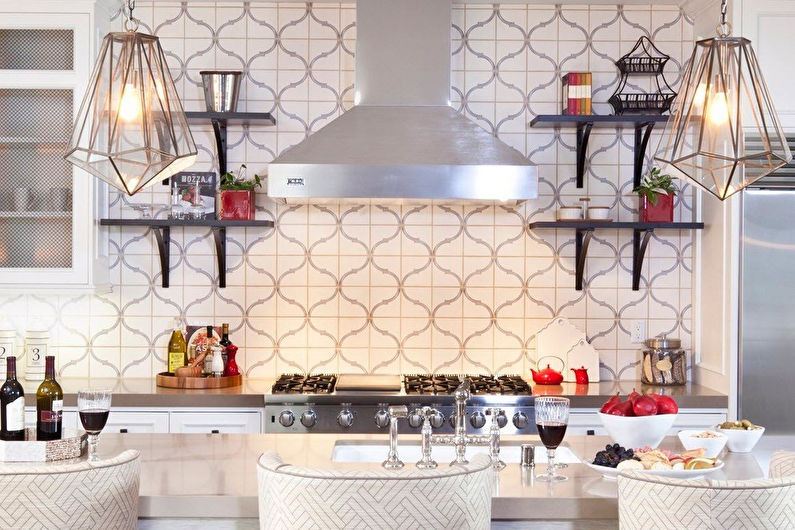
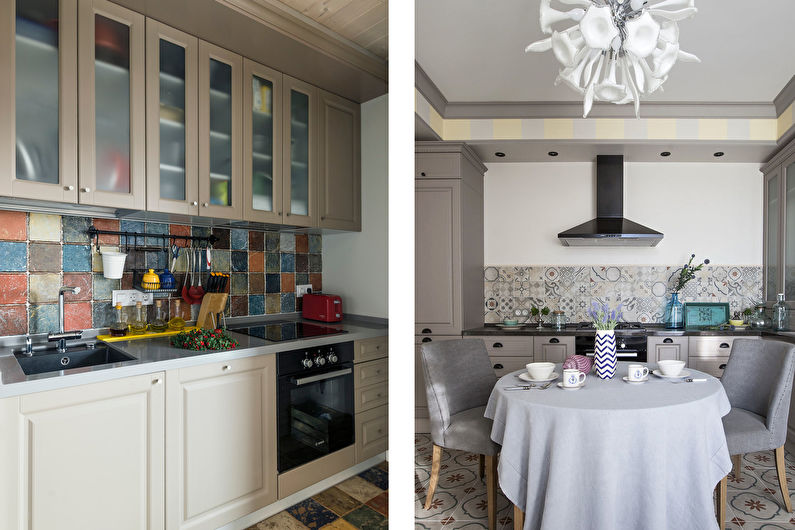

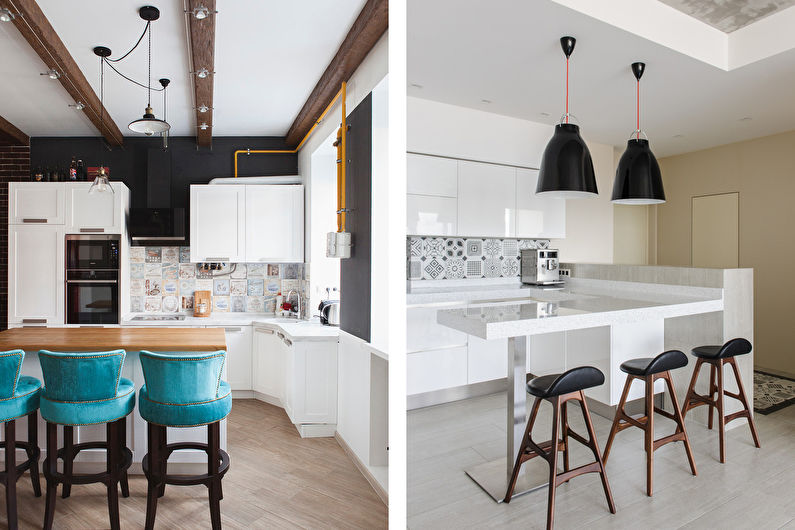
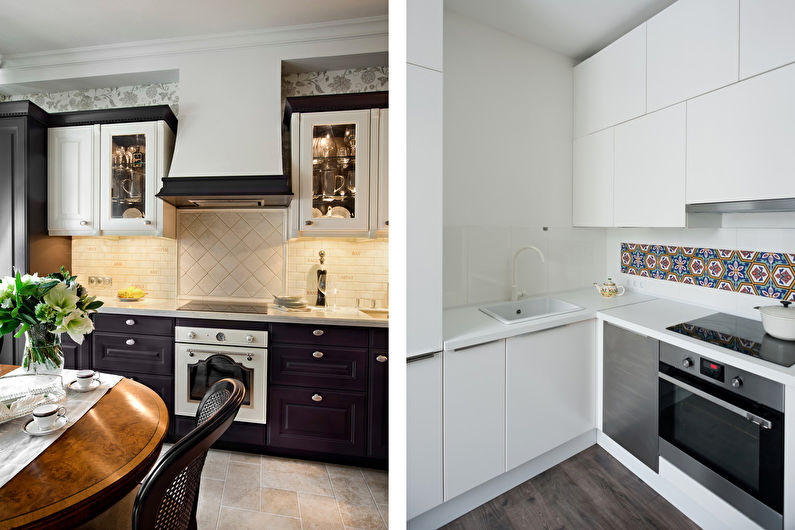
2. Mosaic apron
A kitchen apron with a mosaic composition looks complicated and artistic. With its help, you can lay out any picture, whether it be abstract patterns or picturesque flowers. Parts are made of different materials, which affects the practical properties of the coating, durability and visual aesthetics.
For example, a decorative stone panel has a deep texture, so restrained color combinations will naturally look. Glass and ceramic "puzzle" is chosen for the design of complex ornaments. In a minimalist interior, you can restrict yourself to a monophonic surface, since the texture of the mosaic in itself creates an artistic accent.
Modern mosaics are sold in the form of matrices of different sizes, as fragments, which are also called chips, come in small, almost “pixel” variations of 1x1cm, or larger ones - 5x5cm.
The main advantage of a mosaic apron in the kitchen remains attractive aesthetics. You can improve the strength of the finish with a good-quality resistant glue. The disadvantages include a large number of seams that can accumulate dirt, the high cost and complexity of installation.
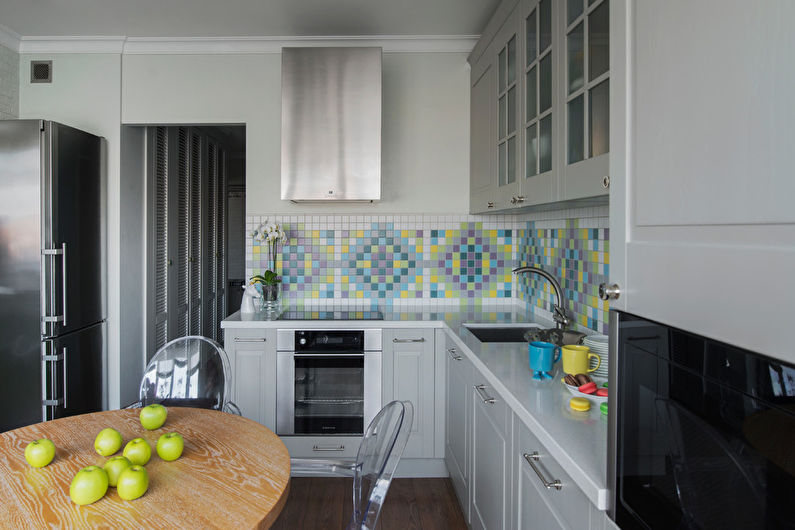
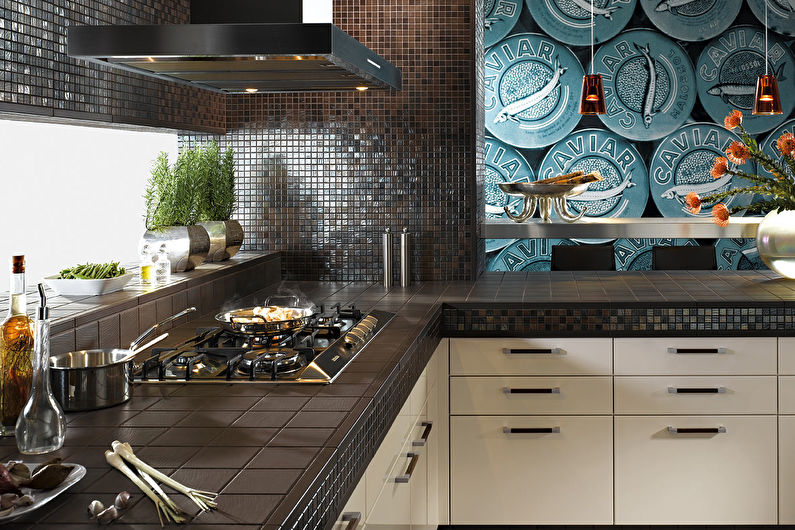
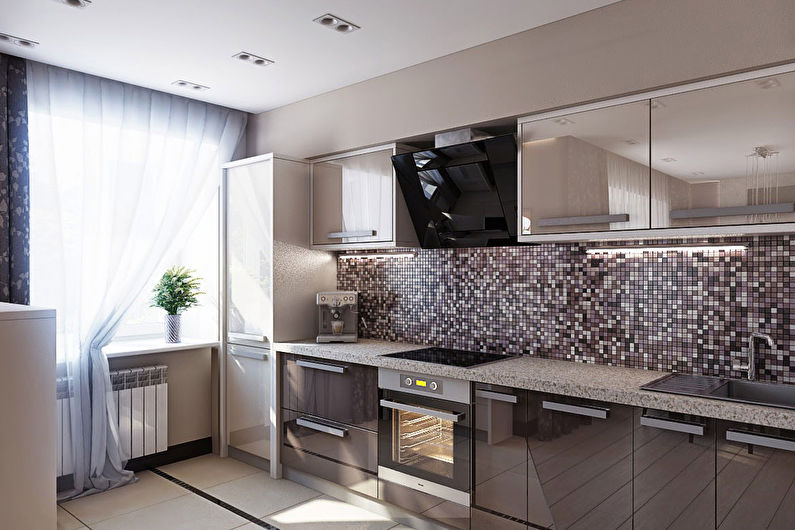
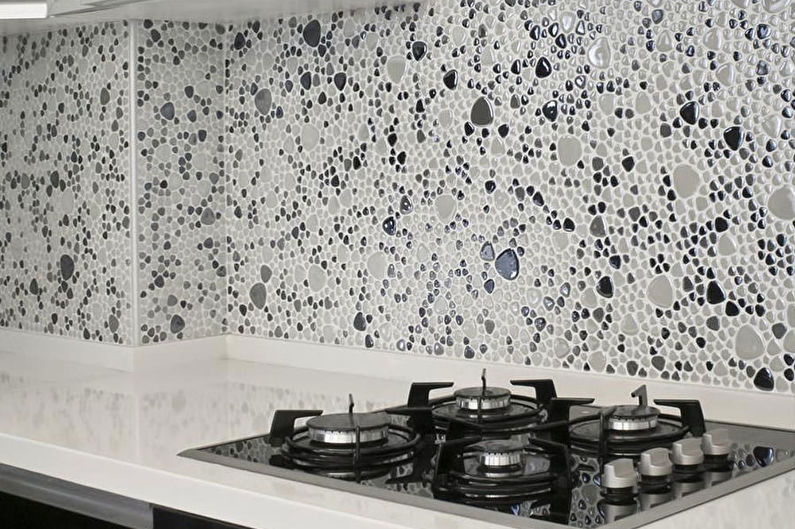
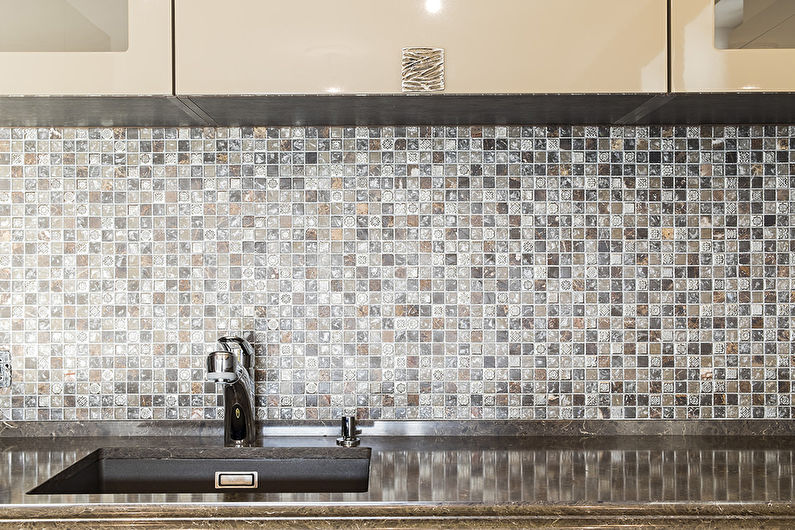
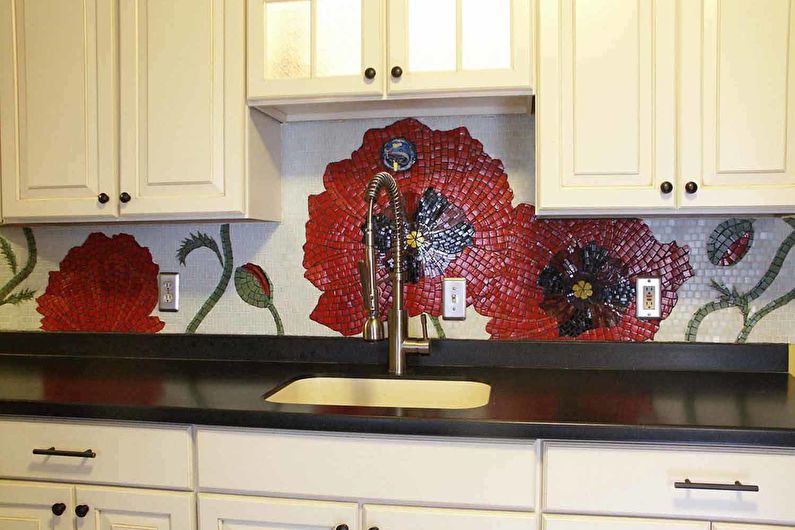


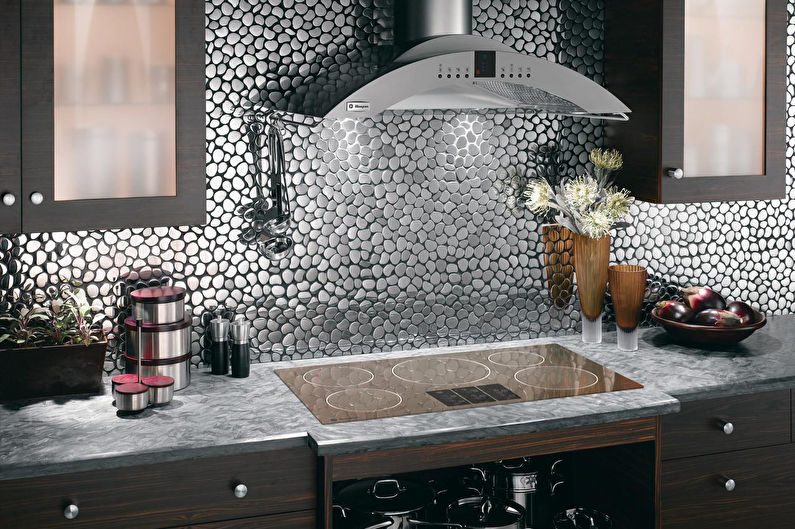
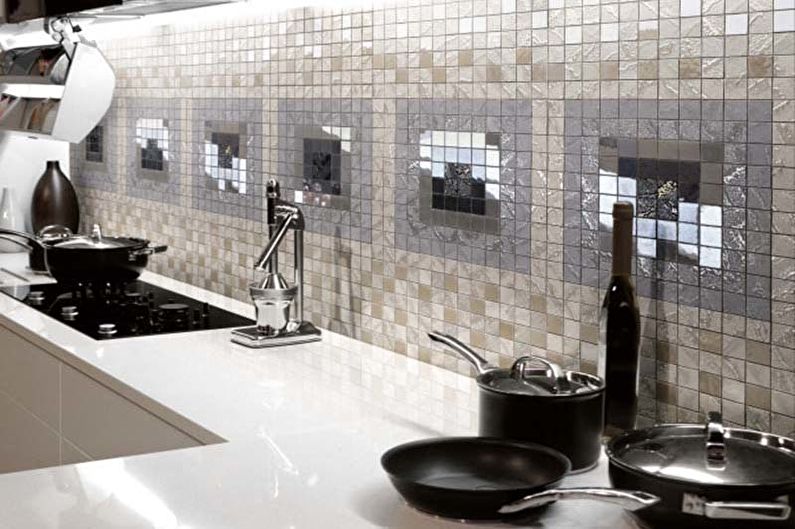
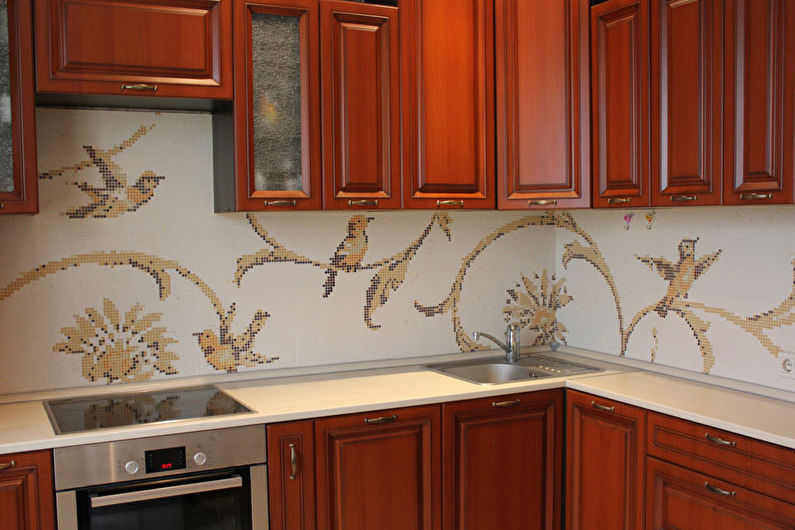
3. Stone apron
Stone as a facing material can be of two types: artificial and natural. The second option is used much less often, mainly because of the high cost, which does not correspond to durability. But to ensure maximum environmental friendliness of the coating, granite slabs can be purchased. They are quite strong and durable. Marble looks very noble, but under the influence of moisture it quickly loses its appeal.
Rational owners prefer artificial analogues. Acrylic and quartz products do not absorb moisture, do not deform, and are also great for decorating countertops in the same way. A gypsum apron can be considered on a par with the previous options if a protective varnish is applied to it. Designers do not recommend combining several varieties of stone within the same space, especially in modern interiors.
Regardless of the origin of the material, its cost is higher than that of other products, and installation requires the intervention of professionals.
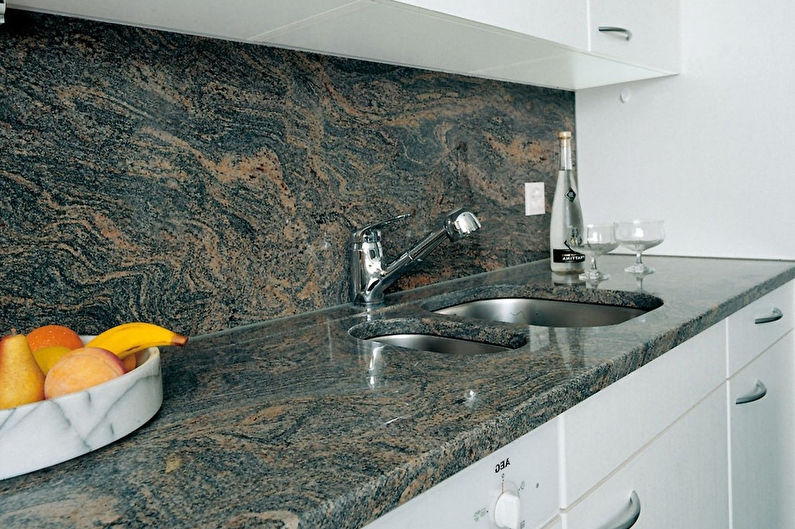
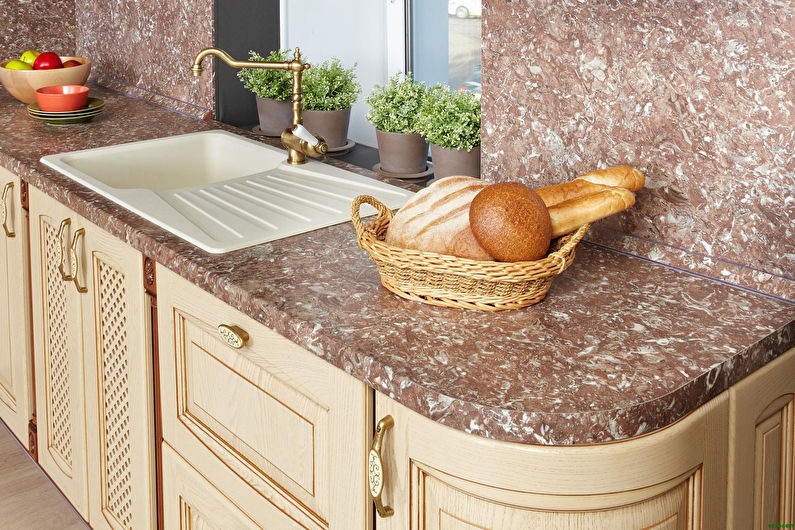
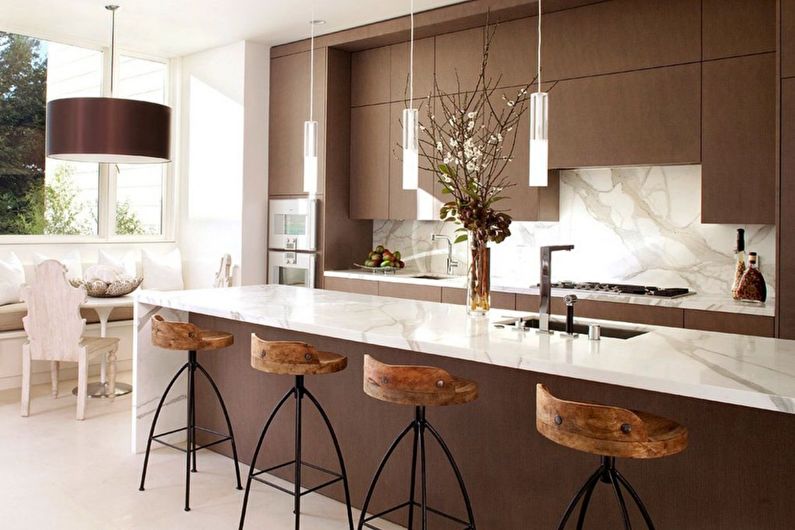


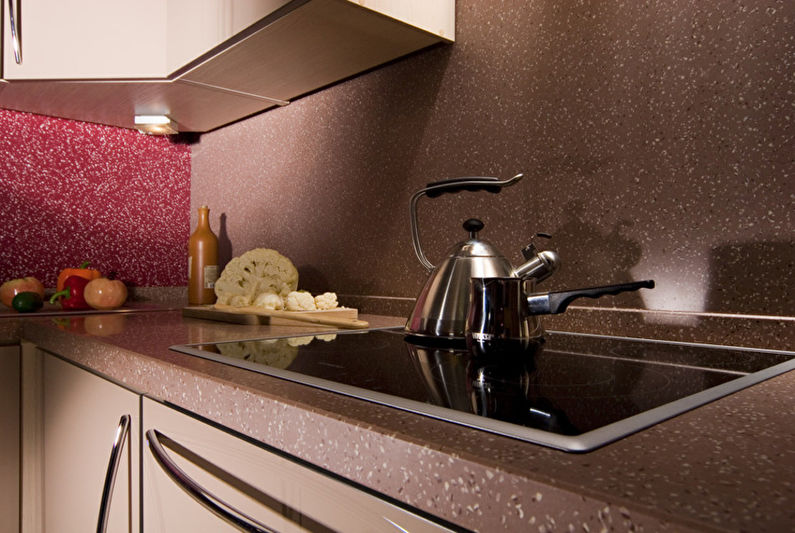
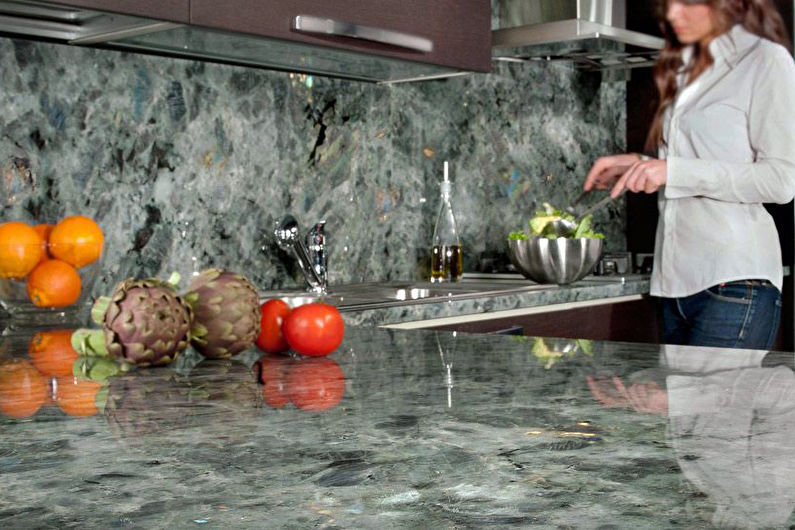
4. Glass apron
Glass products are associated with fragility and do not immediately inspire confidence. But for the design of the kitchen apron, a hardened variety is used - it is much stronger, does not scratch, is not afraid of sunlight or temperature extremes, and the service life reaches ten years. Glass is often installed on top of other coatings for protection.
The disadvantages include the high cost and the need for an order for individual measurements due to difficulties in the trimming process.
The design of the glass apron can be plain or imitate other materials. The visual variety expands the possibility of photo printing of any complexity - the work area will definitely become a vivid detail of the kitchen.


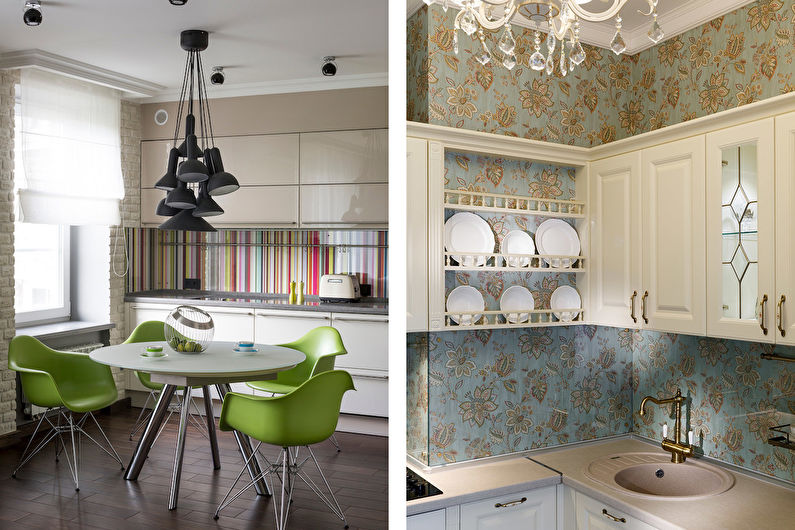
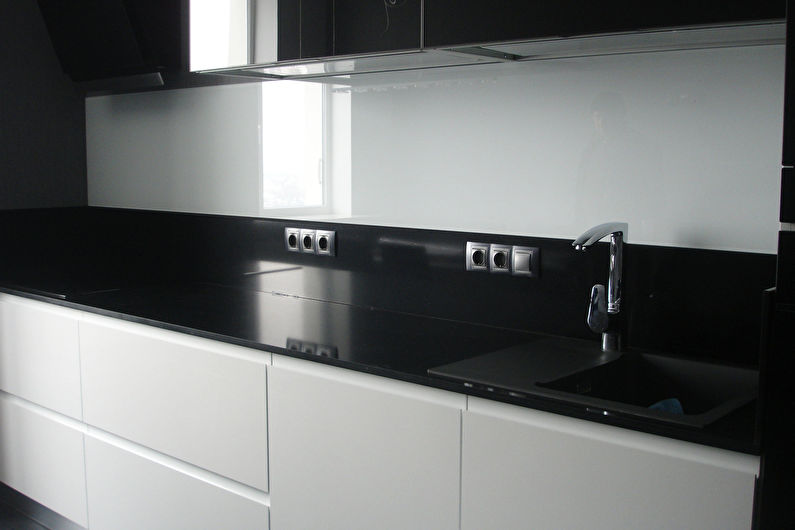
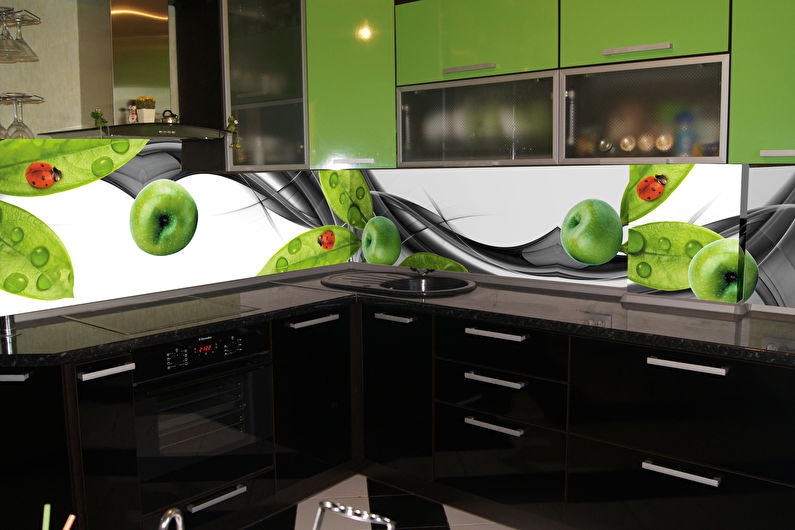
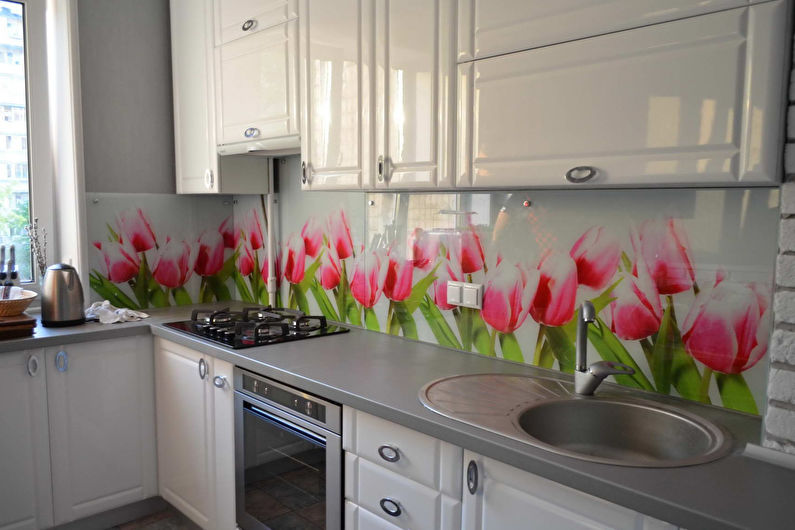
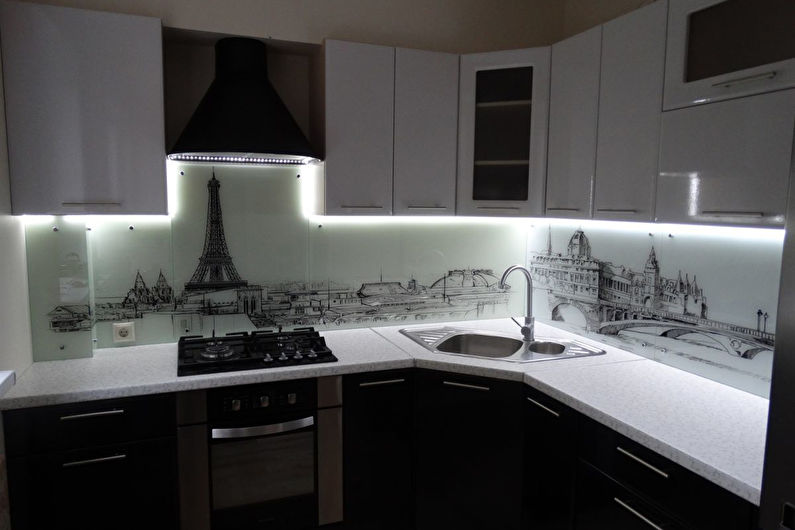

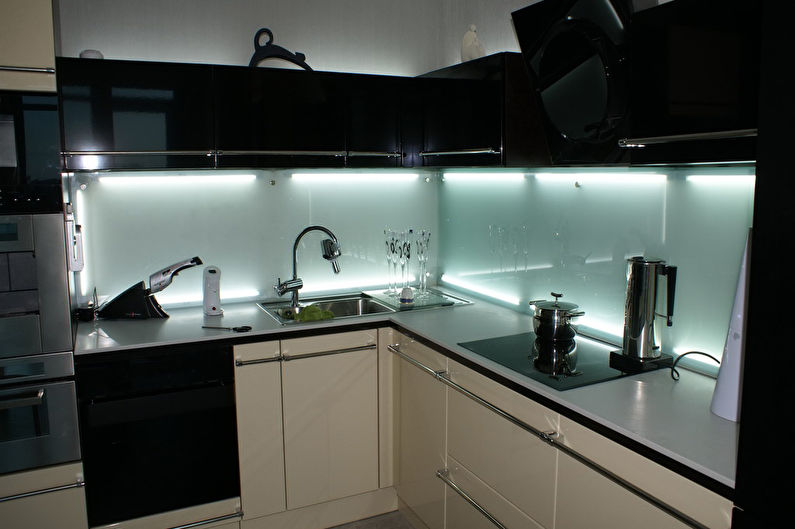
5. Steel apron
Such an element will ideally fit into the interior of the kitchen in the style of hi-tech, loft or minimalism, but if you wish, you can choose the suitable option for classic areas. In general, an apron made of steel is still considered something exclusive. He gives the room a strict, stylish, even “official” look, so metal is often combined with a “warm” wood.
Aprons are made from affordable stainless steel, as well as more expensive copper. The texture can be different: glossy, mirroring the interior, or matte, forming a soft “glow”. A sheet of metal can cover the entire free zone, so that it will not form seams and create a feeling of solidity.
The workspace will look even more spectacular if you install a special illumination above it - the light of spotlights directed to the steel sheet shimmers beautifully in the evening.


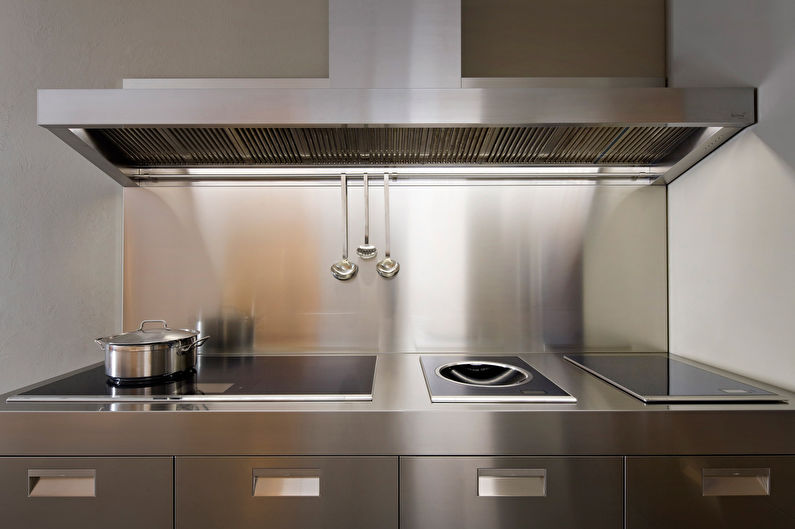
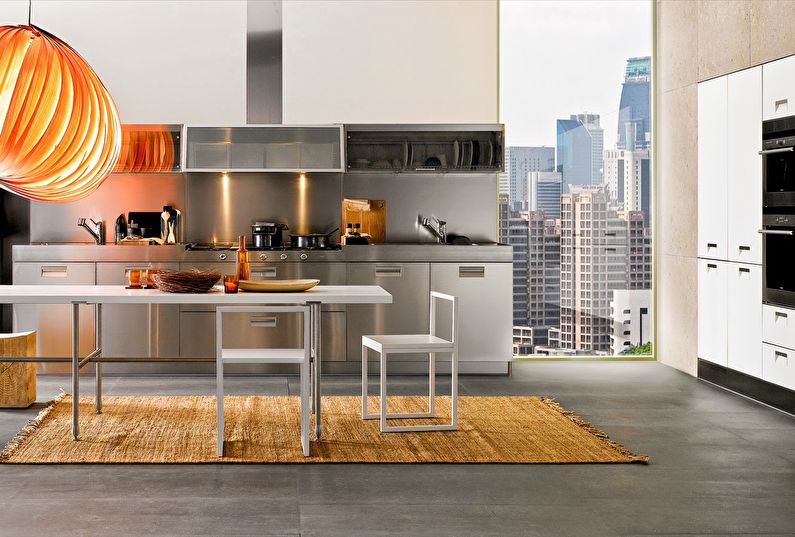
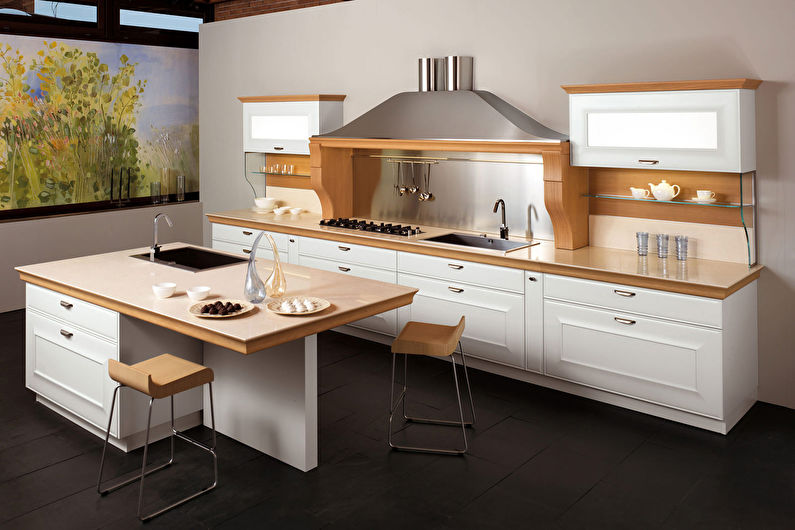

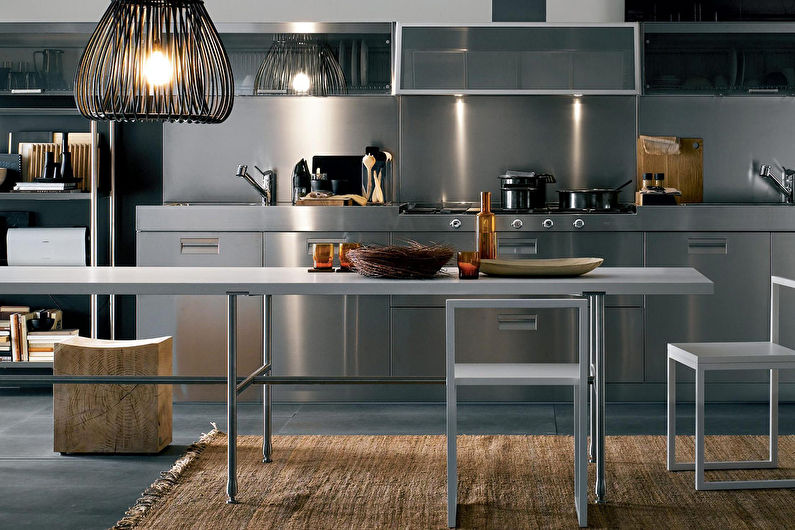

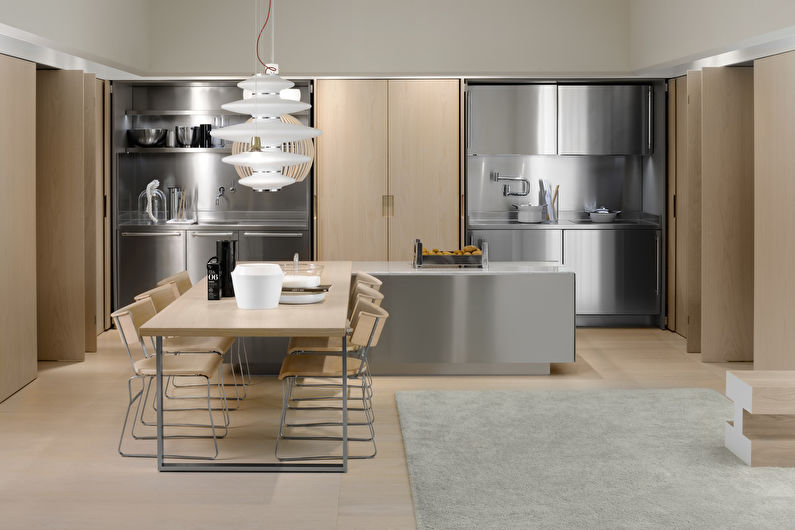
6. Apron made of wood or MDF
A wooden apron is a very controversial option for the kitchen. Due to its porous structure, this material absorbs moisture, dirt and odors. But in some cases, environmental friendliness and natural aesthetics of wood is a necessary component of design.
Such a coating requires preliminary preparation, which includes the application of a protective varnish, as well as special oils that prevent drying. A wooden product can be hidden behind transparent glass in a zone with a plate, or even better - replaced with more affordable MDF and particleboard.
The apron made of wood will perfectly fit into the kitchen of any style, will form a cozy and comfortable atmosphere. It is often combined with a countertop or other elements of the headset.
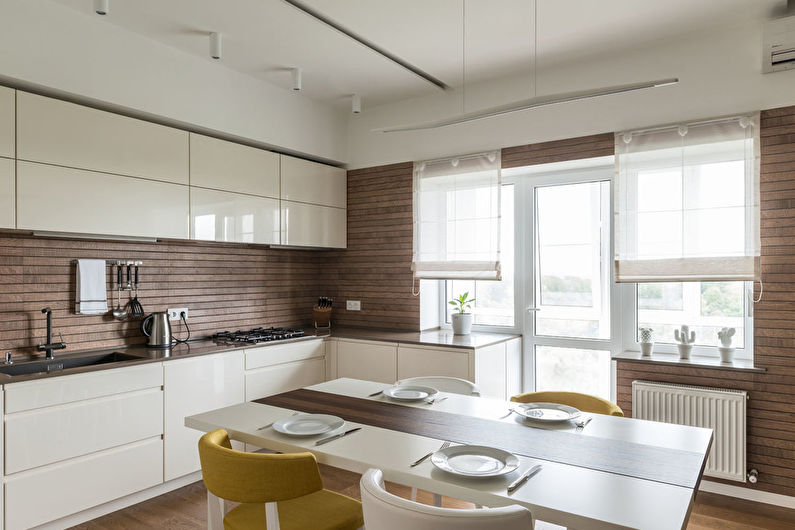
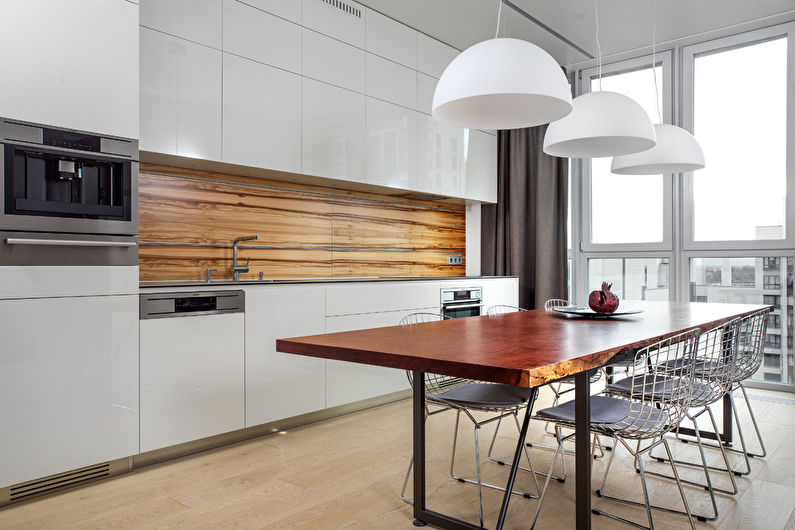

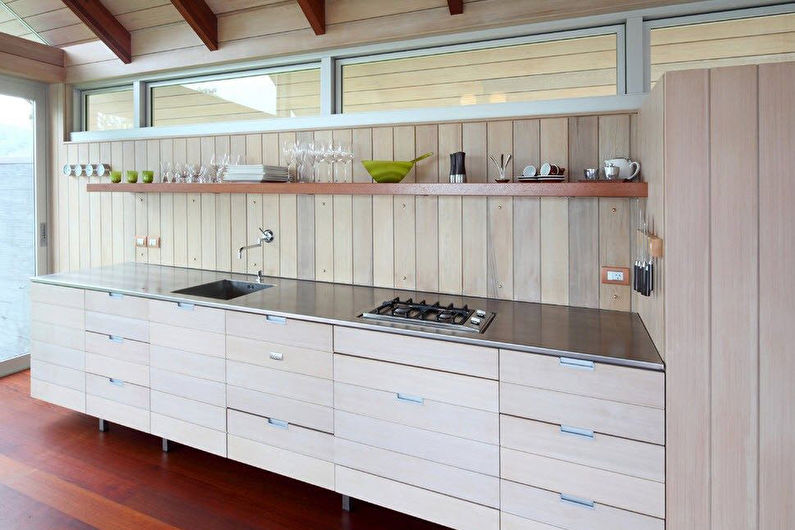
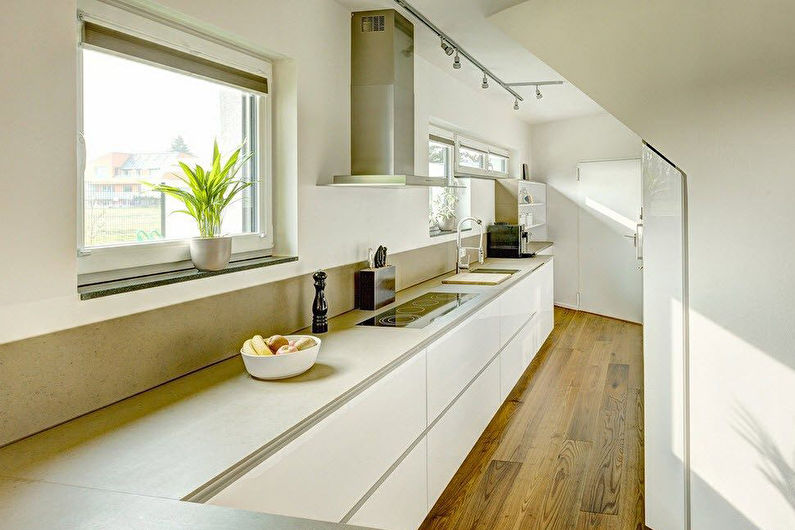

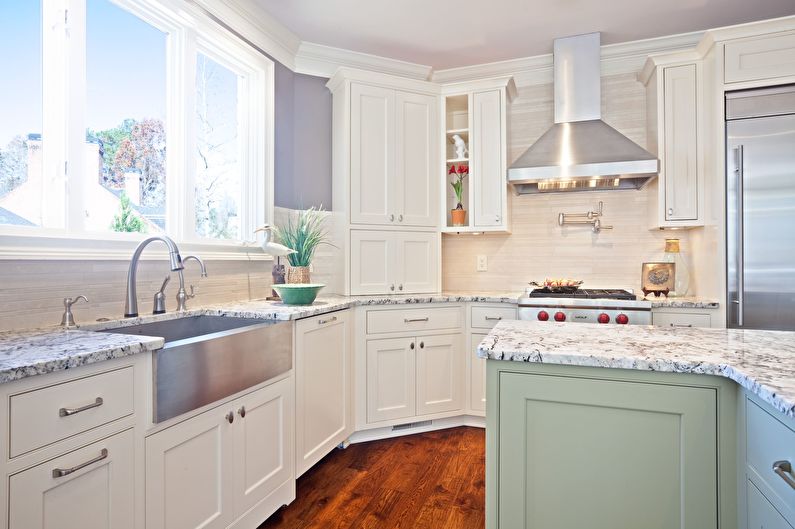
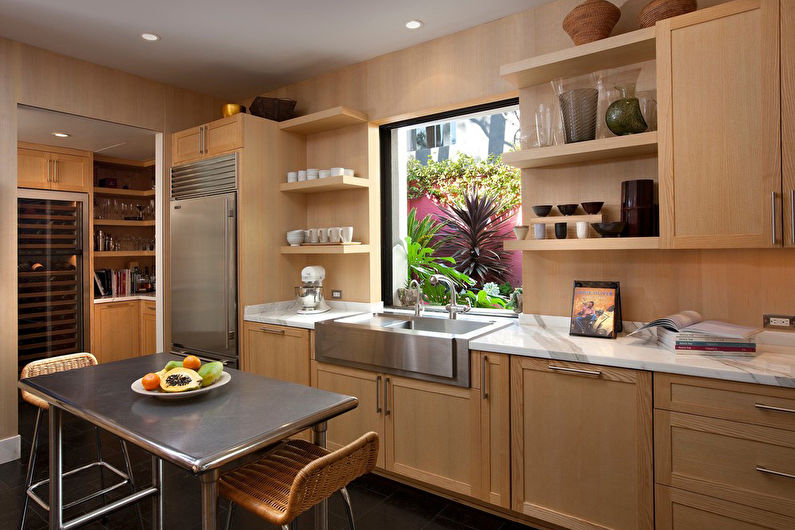
7. Brick apron
Brickwork is incredibly popular not only in the loft, but also in other interiors. It is not necessary to use coarse brick for decoration - you can create the desired texture with the help of more practical materials that can cope with the role of a kitchen apron.
A stylish solution is a brick apron made of ceramic tiles. You can choose a glossy or matte texture, as well as choose a custom color combination. An artificial stone also has the required effect, but it is recommended to worry about its preparation in advance.
If there is no need to imitate masonry, natural brick is suitable for the design of the working area. It is resistant to temperature changes, durable enough and not picky to care for. Before buying, make sure that the surface is not coarse-grained, otherwise it will quickly absorb all kinds of contaminants.
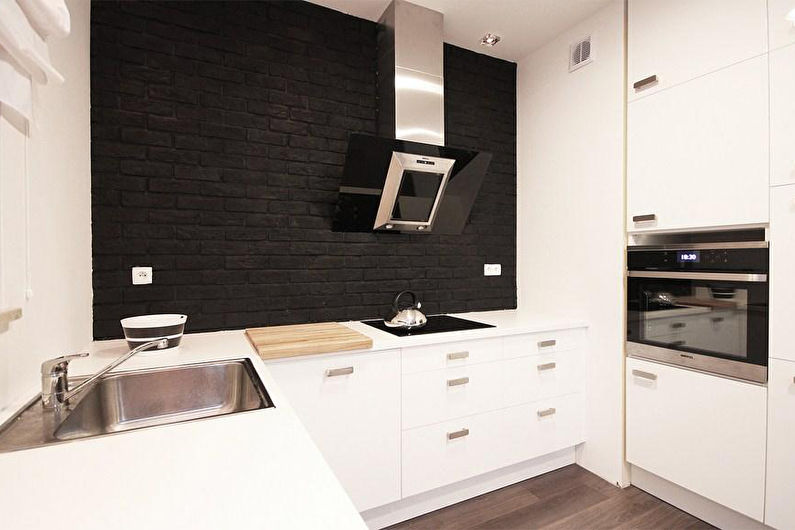
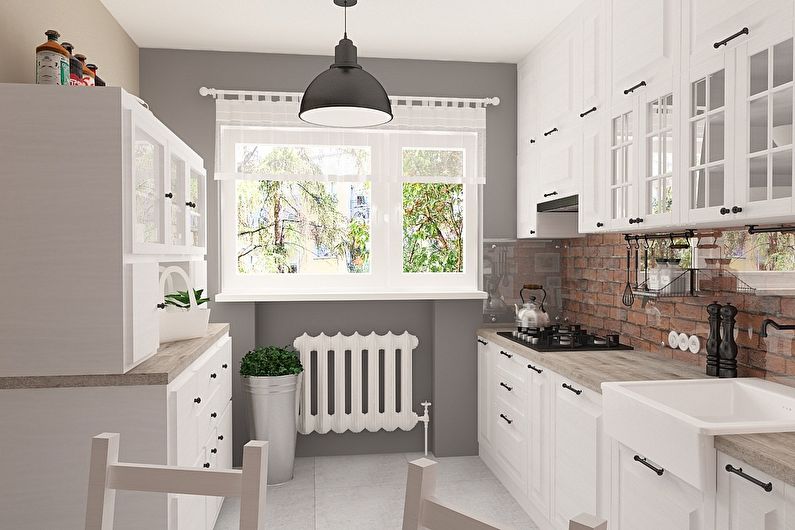

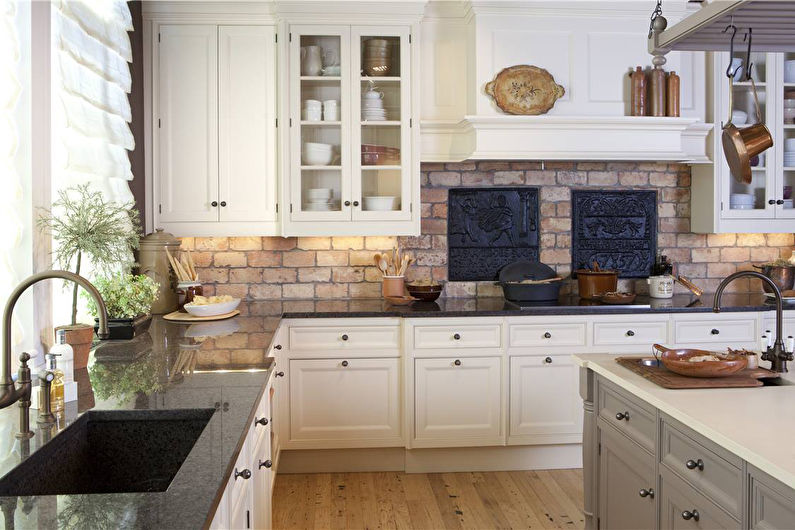
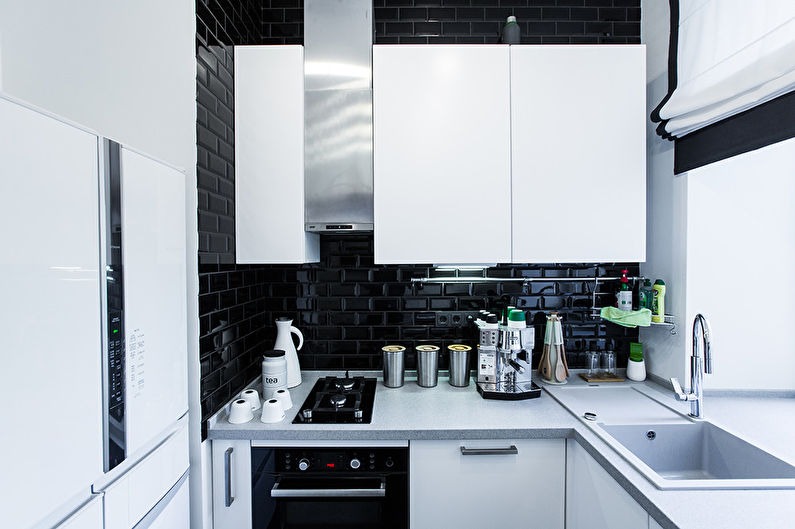
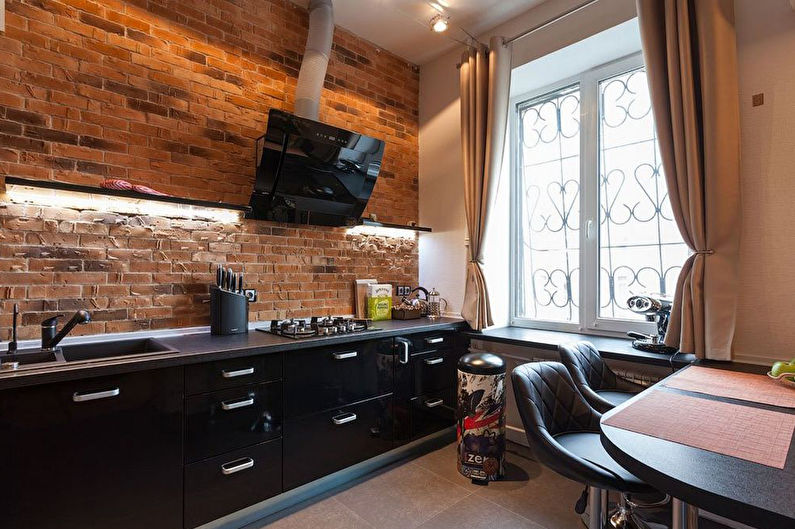

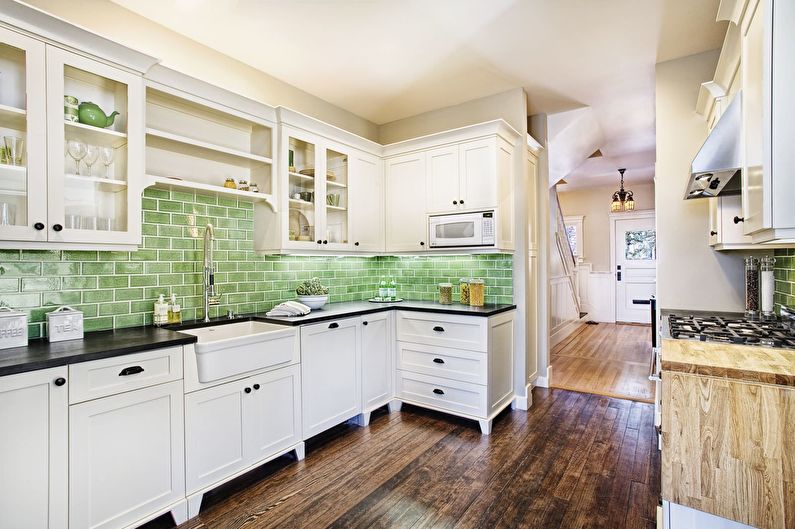
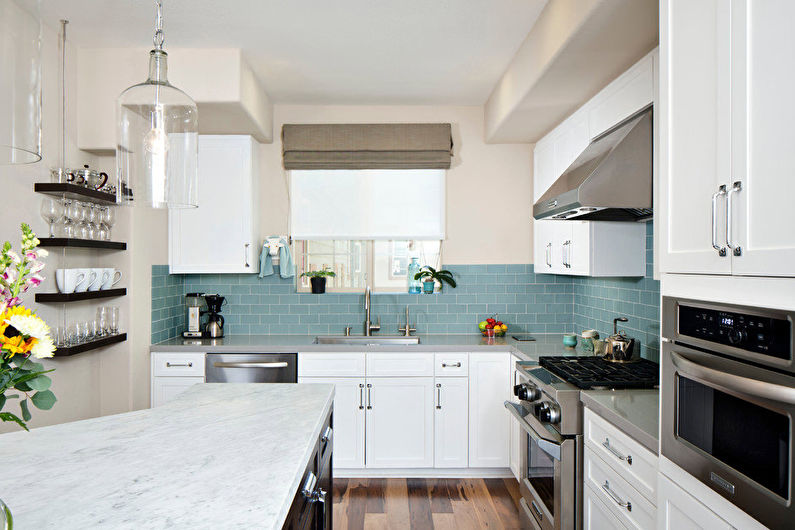
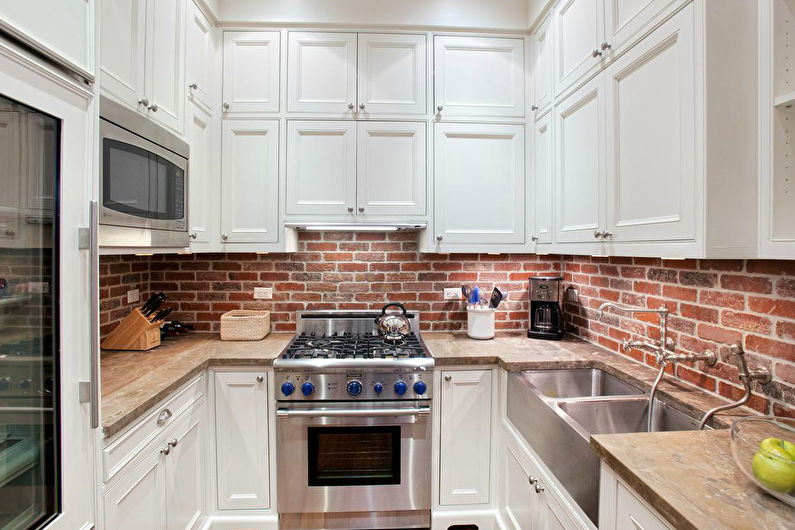
8. Mirror apron
As a material for cladding, the mirror is not inferior to tile or glass. It perfectly "survives" in harsh kitchen conditions, does not lose its appearance after a long period of use, and is cleaned like a normal mirror with a damp cloth and detergent.
The mirror apron in the kitchen is not afraid of mold, fungus or aggressive chemicals, except, perhaps, hydrofluoric acid, which is rarely found in everyday life. The disadvantage of this solution can be considered fragility, although some modern products have increased strength.
Mirror apron is found in three variations:
1. The panels. It can cover the entire working area, thereby forming a single volume without traces of the joint.
2. Tile. Distinguish details of different shapes and configurations. Joints are filled with transparent sealant.
3. Mosaic. Best suited for large spaces. On a fragmented surface, color shimmers.
The working area of the kitchen is decorated with a mirror to visually extend the room and create a beautiful light effect.

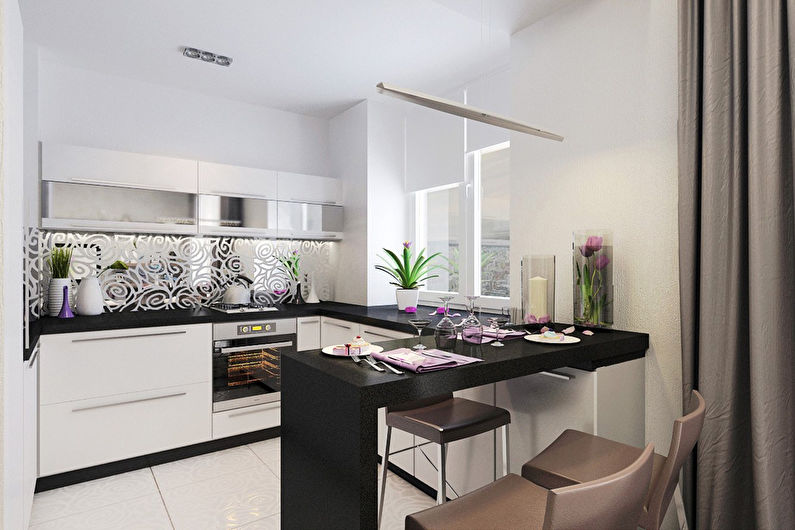

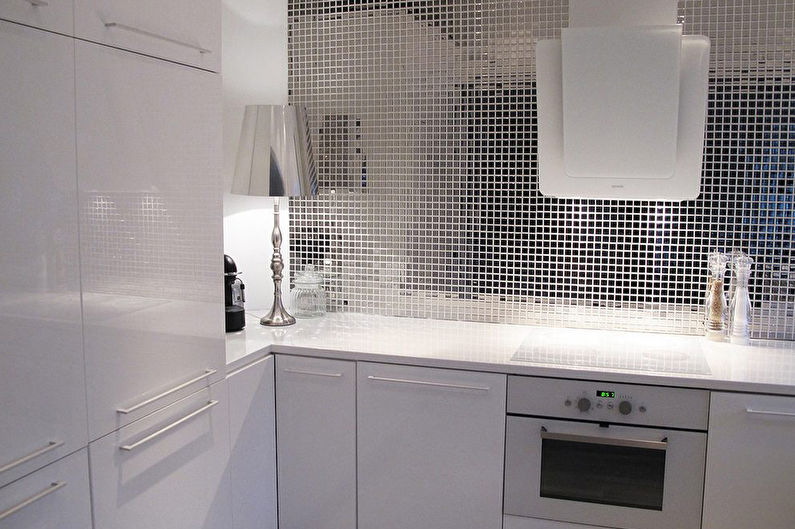
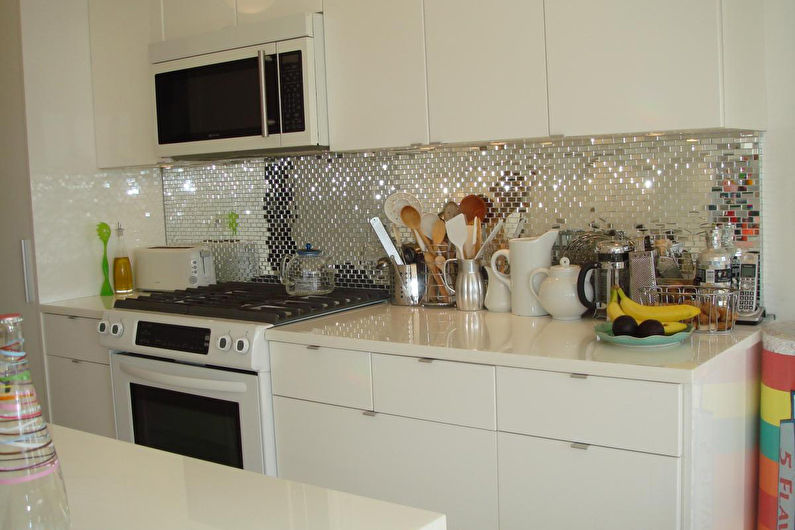
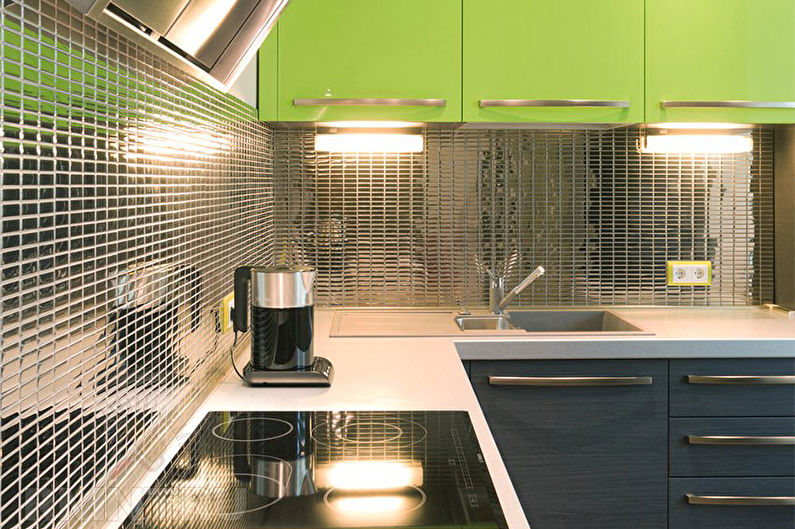
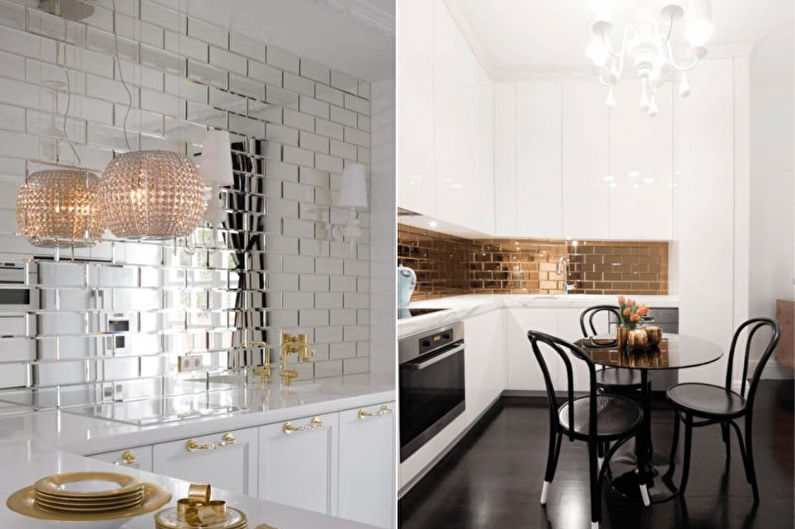
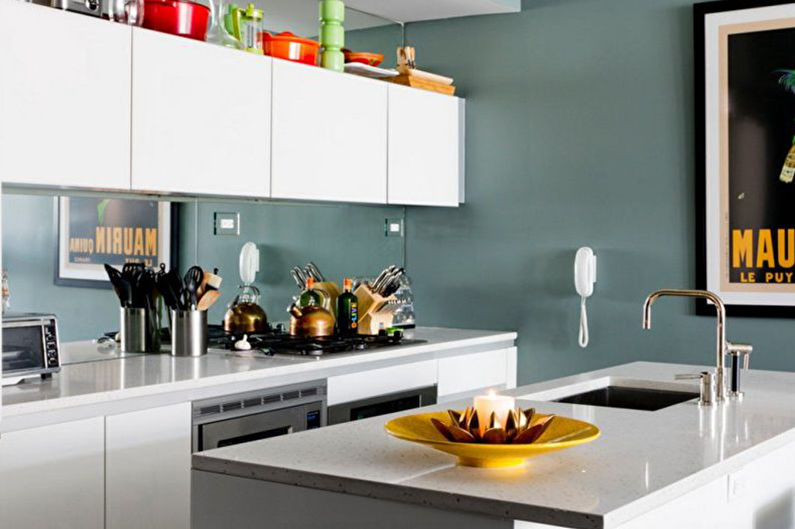
9. Porcelain apron
The composition of porcelain stoneware includes two grades of clay, quartz sand, silicates and coloring pigments. Each ingredient improves the characteristics of the material, as well as expands the visual capabilities.
Due to the cost and complexity of installation, porcelain stoneware is often used to decorate the entire wall, but where you need a particularly strong coating, you can limit yourself to just an apron.
This type of cladding is good because it can be used to imitate any other material: for example, inscribe the texture of wood, which is less resistant to kitchen conditions, or expensive marble.

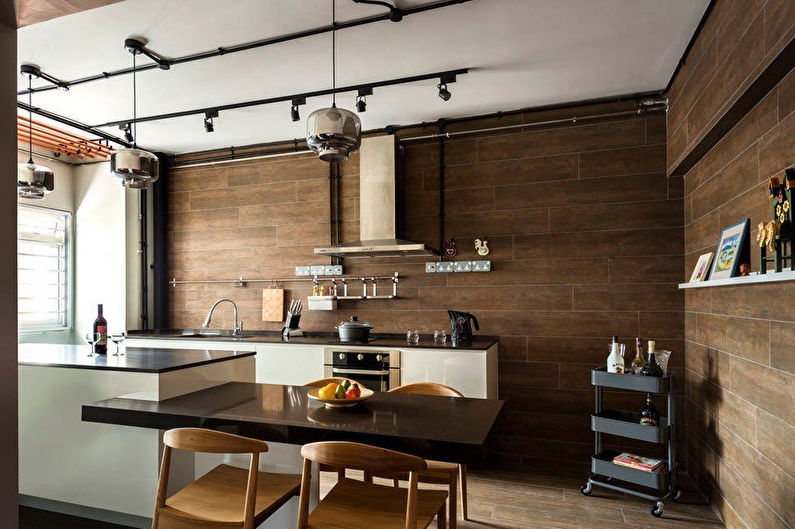
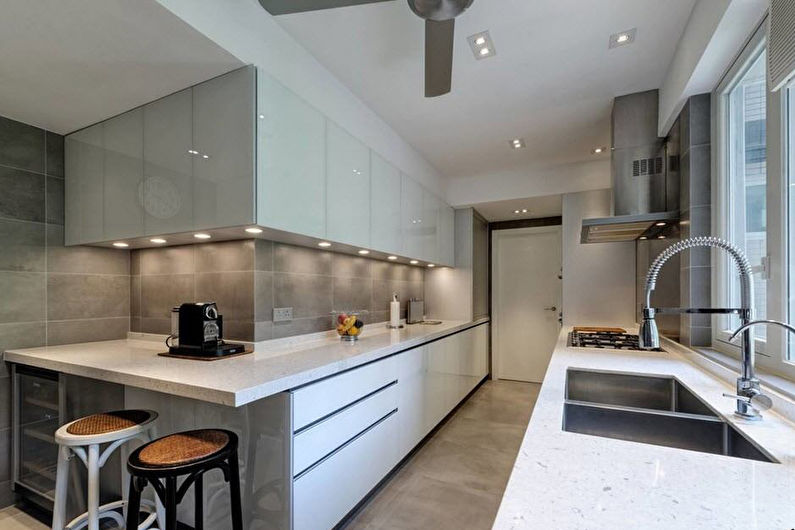
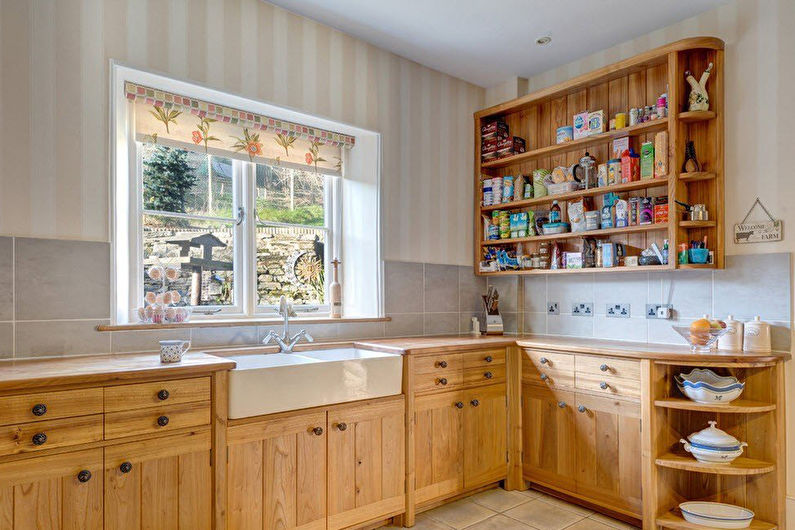
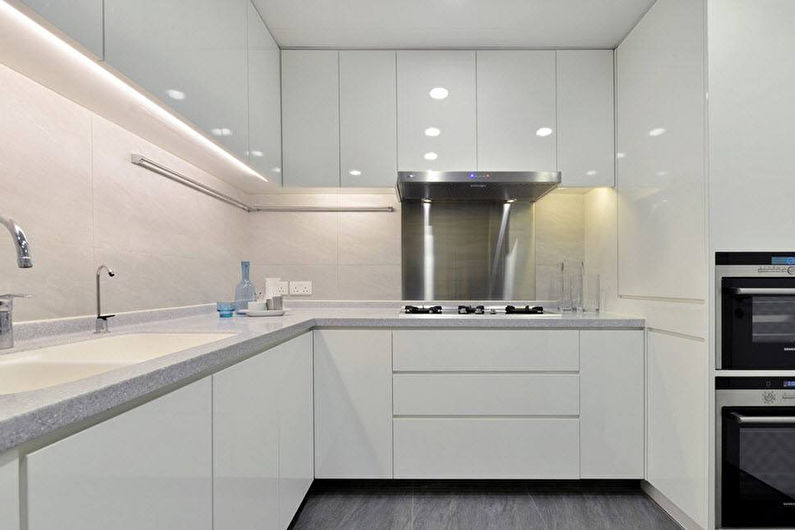
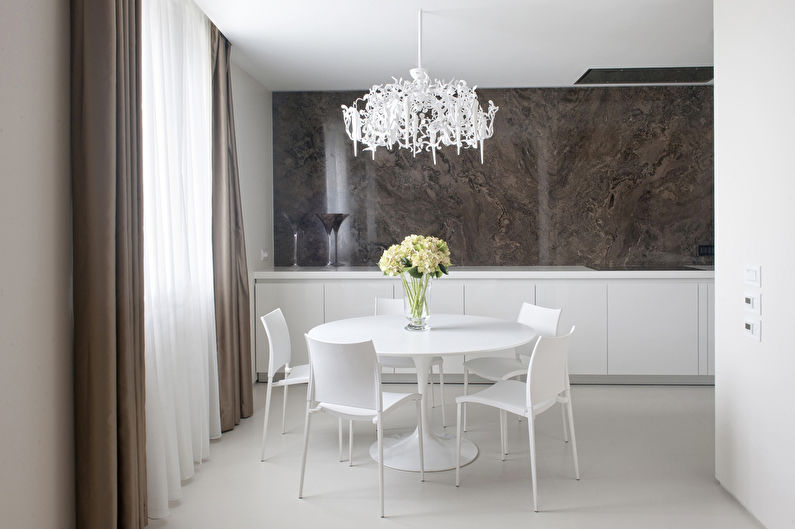

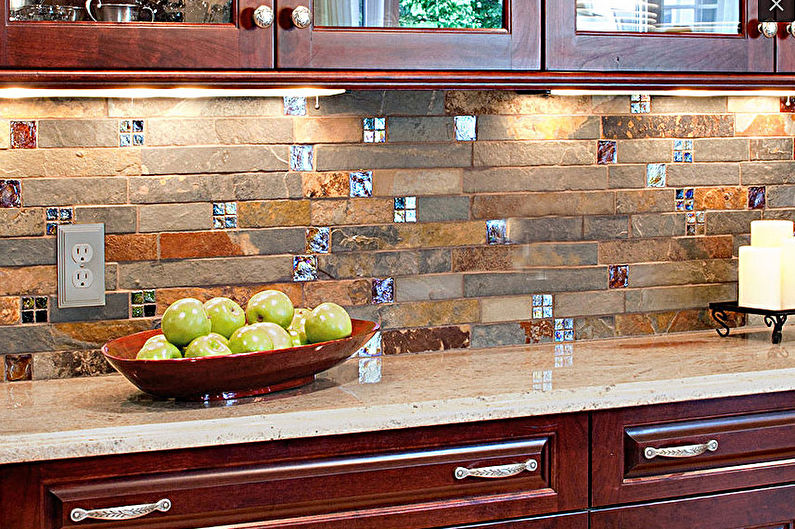
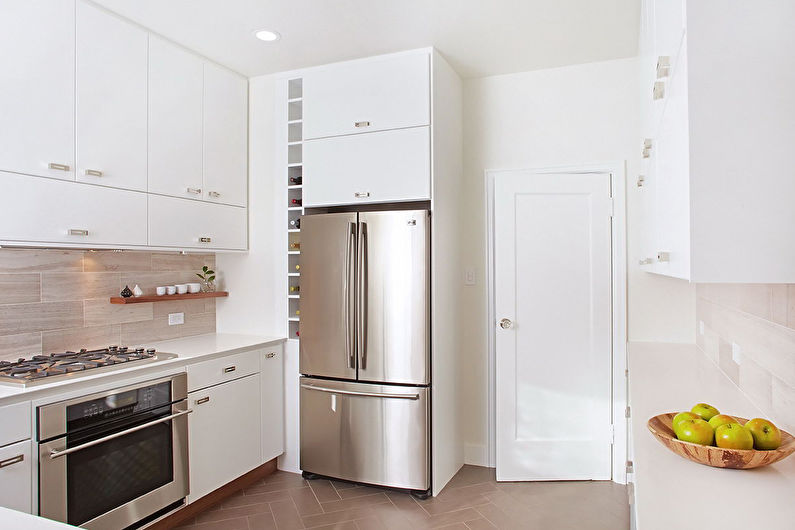
Video: DIY apron in the kitchen

